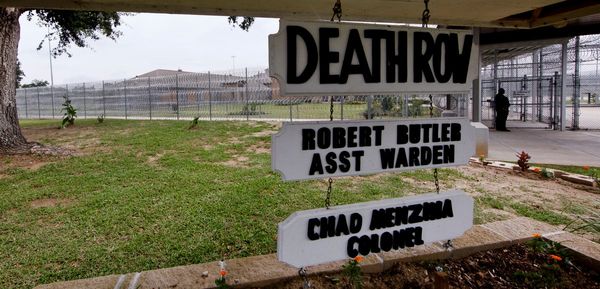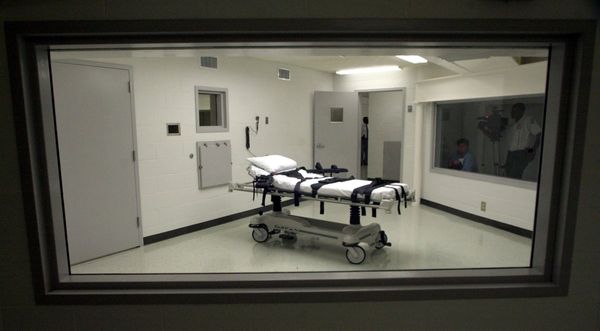The game of high school football is a spectacle in itself, regardless of where the contest is played.
These 20 prep stadiums stand out and even lend more to the Friday night atmosphere. Whether because of the fan experience, history or natural scenery these venues offer, each is unique and creates a special background and enhances the athletic contest.
1. Allen Eagle Stadium: Allen, Texas
Allen is probably the most expensive high school football stadium in the country and has a seating capacity of 18,000.
Everything is bigger in Texas, so it’s not surprising that taxpayers did not put up a fuss over the $59.6 million price tag. That’s probably because Collin County residents have the highest medium income in the state and Collin County is one of the 25 wealthiest in the country.
Approximately 7,500 reserved, chair-back seats will be sold on a season basis each year. Officials also are reserving 5,000 seats for fans of the visiting team, 4,000 for Allen students and 1,000 for the school’s band. That leaves a mere 500 for general admission each week.
Though it will be only the fifth-largest stadium in Texas, it will be the largest used by only one high school.
2. Bazemore-Hyder Stadium: Valdosta, Georgia
Built in 1922 and refurbished in 2004 with new synthetic turf and a state-of-the-art scoreboard, the home of the Valdosta Wildcats is one of the nation’s best examples of honoring the past with an eye on the present. The stadium can hold more than 11,000 and is used by Valdosta State University as well. Valdosta High, which has won more games than any other school in U.S. history, has been known to intimidate opponents when its players bang their helmets as they come onto the field.
3. Fawcett Stadium: Canton, Ohio
Fawcett officially was dedicated in 1938, seating 15,000, and was the largest high school football stadium in the country at the time. It was built by the Works Progress Administration at a cost of $500,000. It seats 22,400 today.
It’s literally a Hall of Fame stadium: It is located next to the Pro Football Hall of Fame and since 1962 has been the site of the annual preseason Hall of Fame Game. When $4.3 million in improvements were made in 1997, it was renamed to include the words Pro Football Hall of Fame. Five years later the Sporting News named Fawcett Stadium the No. 1 high school football venue in the country.
Presently, it is the home field for McKinley High and Timken High, as well as Walsh University and Malone University.
4. Jones Stadium: El Paso, Texas
Jones was the first major concrete stadium built in the country, opening in 1916 with a seating capacity of 12,000. The stadium is the home field for El Paso High and the entire package was constructed at a cost of $500,000.
The school is nicknamed “The Lady on the Hill” because it sits on a mountainside at the foot of the Franklin Mountains. Jones Stadium overlooks central El Paso and its border with Ciudad Juarez, Mexico. The school actually wraps around the stadium and semicircular steps lead from the field directly to the main entrance of the school. Combined, they take up four city blocks. El Paso High, which has beautiful marble floors, was named a historic landmark in 1980 by The National Register of Historic Places.
This field, located in the heart of the Navajo Reservation, provides a world-famous view of desert landscape. Watching from the stands as the sun begins to set, one can see ancient red-rock formations go from red to orange to purple. The breathtaking beauty of this area has been recorded over and over again in countless movies: Easy Rider, Forrest Gump, Cars, Mission: Impossible II and many more.
The field forms one of the few patches of green in the area and is situated in a small bowl. The sky seems to stretch forever on the northern horizon. Fry bread and beans are sold at the concession stand, a student sings the National Anthem in Navajo and fans are known to build a campfire nearby as the night air cools. Once in a while, several cows will wander across the field, briefly stopping play.
5. The Pit: Cincinnati
The Pit was started in the 1930s by student and parent volunteers, but due to World War II was not completed until 1947. It seats 10,000.
Located on the west side of Cincinnati at Elder High, the Pit is horseshoe-shaped and was dug into Price Hill. The concrete stadium has the closeness of a basketball court with the sidelines resting a mere 5 yards from the stands. That creates a very intimate – and intimidating – atmosphere that greatly favors the home team.
Elder’s rabid fan base could be compared to Chicago Cubs’ fans at Wrigley Field because some have built decks on their homes to watch games from a distance. The Pit is in the middle of a neighborhood, surrounded by trees. The field itself contains a Vietnam Veterans Memorial Wall, which contains the names of 11 Elder graduates who died in the war – the most in Ohio.
6. Ratliff Stadium: Odessa, Texas
Ratliff Stadium seats 19,302 and has been called the “Epicenter of Texas High School Football.” Built in 1982 at a cost of $5.6 million, Ratliff is the home to Odessa and Permian.
Permian is a past national champion, and the program has been the subject of a book and the TV series “Friday Night Lights.”
The stadium is totally wired for modern media exposure. All games are rebroadcast on public access channels in the Midland/Odessa market on Sunday afternoons, and sometimes playoff games are televised live.
All seats are reserved except for the student sections. The ticket booth has five windows, but the demand for tickets is so great that sometimes it never opens due to sellouts. It’s not uncommon for fans to line up the night before to purchase tickets ahead for big games.
7. The Ensphere: Eagar, Arizona
Situated at an elevation of 7,000 feet in eastern Arizona and completed in 1991, this was the first domed high school football stadium in the country. The facility, which cost $11 million, has 189,000 square feet.
Near the New Mexico border, the Ensphere is home to Round Valley High and can host a football game, tennis match and either a basketball or volleyball game at the same time. It is home for six different sports overall. As one can imagine, the domed Ensphere can get very loud.
8. Stadium Bowl: Tacoma, Washington
Originally known as Tacoma Stadium, this unique field at Stadium High was considered an “eighth wonder of the world” when it was completed in 1910. It was built on the site of a luxury hotel that burned down in a mysterious fire before its completion.
It has a breathtaking view of the Puget Sound and was spotlighted in the movie “Ten Things I Hate About You.”
Over the years, Stadium Bowl has been the gathering place for celebrities from all walks of life. In 1911, future President Theodore Roosevelt spoke there to a crowd of 40,000 and stated he had seen nothing like it anywhere else in the world. Musician John Phillip Sousa performed there in 1915 before a crowd of 25,000 and praised the superb acoustics. In 1919, President Woodrow Wilson spoke there before 40,000 on a whistle-stop tour.
It originally seated 32,000, but erosion caused enough damage to reduce today’s capacity to just 15,000.
9. George Washington High School: San Francisco, CA
It’s not too difficult to lose one’s thoughts during a football game at George Washington High. The breathtaking views of the Golden Gate Bridge are simply mesmerizing.
Tourists from throughout the world travel to gander at the golden structure, considered a national symbol and tabbed one of the Wonders of the World by the American Society of Civil Engineers. But the Eagles get to stare at it every day at practice.
Built in 1940 in San Francisco’s picturesque Richmond District, the stadium overlooks the Golden Gate, deemed by Frommers Travel Guide as “possibly the most beautiful, certainly the most photographed bridge in the world.”
Called simply Washington High School Stadium, the field is also accented by a beautiful 2,500 square foot frieze with panels that depict both ancient and modern sports in the Olympics.
10. The Wolvarena: Pittsburgh, PA
Home of Woodland Hills, the Wolvarena also has been known as Turtle Creek Stadium. It was built in 1942 and seats 12,500. In recent years it has received an $8 million facelift, which included artificial turf, a paved parking lot, new bleachers and restrooms.
Due to a rabid fan base, the stadium once was voted “most intimidating stadium in Pennsylvania,” in large part because the seats are less than 10 yards from the sidelines.
Among famous alumni who have played at the stadium are Jason Taylor and Leon Hart, who won the 1949 Heisman Trophy at the University of Notre Dame. Available at the concession stand are such items as stuffed cabbage, kielbasa and sauerkraut.
11. Napa Memorial Stadium: Napa, CA
Known as the Fenway Park of Northern California prep football stadiums, the grandstands surrounding the field may be the steepest you’ll ever see. And with no running track as well, the atmosphere for big games when Napa High and Vintage High are playing is electric. The all-grass surface is immaculate. Throw in the two Quonset huts on one end with trees on the other and Napa Memorial becomes very tough to beat. The Oakland Raiders have a preseason event at Napa Memorial every summer.
12. Tad Gormley Stadium: New Orleans
This field became one of many symbols of the destructive force of Hurricane Katrina in 2005, when it was completely flooded. Photos of the stadium, with its concrete grandstands surrounding a pool of water, were seen all over the world. It had been the scene of some of the biggest games in Louisiana prep football history. After extensive repairs, a Louisiana high school playoff game was the first to be played when the stadium re-opened. Tad Gormley Field is located in City Park and has also hosted other events, including the 1992 U.S. Olympic Track and Field trials. The field itself has been re-named in honor of former New Orleans Saints and USC running back Reggie Bush, who donated much of the money needed for repairs.
13. Jelsma Stadium: Guthrie, OK
Located in downtown Guthrie, the state’s first capital, it’s listed on the National Register of Historic Places. Named for Lawrence Jelsma, a prominent Guthrie businessman of the 1920s and ’30s, it was constructed in 1936, partly with funds provided by the Works Progress Administration, and was built using primarily sandstone. The field sits at the bottom of a 30-foot sandstone wall, the top of which is a few feet above street level.
14. Bill Duchon Stadium: Glen Ellyn, IL
The field is surrounded by woods on three sides, and with the man-made Lake Ellyn Park behind the visitors’ stands, the crowd atmosphere on Saturday afternoons (there are no lights) appears right out of the movies. In fact, scenes from the movie “Lucas” were filmed at the site. The high school, built in 1923, looks like a castle, complete with turrets, and sits atop a hill behind the home bleachers. After a Hilltopper victory, the home-team players storm up the hill to ring a victory bell to announce to the town they’ve won. The field is named after a longtime coach/athletic director who resides in the affluent suburb west of Chicago.
15. Roosevelt Stadium: Union City, NJ
You have to get creative when building a football stadium in the most densely populated city in the country. Located in Union City, Roosevelt Stadium is situated on the roof of Union City High School. The stadium cost $15 million to complete and includes 40-foot tall nets behind the end zones to catch field goals and errant passes. The urban location offers views of the New York City skyline across the Hudson River.
16. San Angelo Stadium: San Angelo, TX
San Angelo Stadium was such a marvel when it was built that a picture of the bowl was on display at the Museum of Modern Art in New York during the 1960s as “an outstanding example of 20th century engineering.”
Resembling the Liberty Bowl in Memphis or the old Tampa Stadium, San Angelo is home to two local high schools, Central and Lake View. It is the fourth-largest high school football stadium in Texas with a capacity of 17,500. The stadium received a new artificial turf playing surface and expanded scoreboard in 2003 and new locker rooms, weight and training rooms and office space in 2010.
17. Cathy Parker Field: Barrow, Alaska
Here is the real frozen tundra. Cathy Parker Field is located right on the water three miles south of the northernmost point of land in the United States. The blue turf field, set 90 yards from the deep blue Arctic Ocean, is made for a spectacular scene. The field cost about $800,000 to build, and it was the result of a fundraising effort by Cathy Parker, a woman from Jacksonville. The field itself, which has a chain link fence surrounding the playing surface to ward off the occasional polar bear, is a major upgrade from the patch of dirt the Barrow High Whalers used to play on.
All of Barrow’s opponents must be flown in for games at a cost of about $44,000. Each Whalers’ away game is a plane flight and a bus ride away. Barrow’s closest away game is in Fairbanks, 503 miles away.
18. Alamo Stadium: San Antonio, TX
Nicknamed “The Rock Pile” for its limestone construction, Alamo Stadium seats 23,000. Home to several high schools in the San Antonio area, the stadium was built during The Great Depression through the government’s Works Progress Administration. The initial construction cost was about $500,000, and the stadium finally received its first major renovation before the 2014 season to the tune of $35 million. Alamo Stadium received new turf and seating and added a new press box and digital scoreboard.
19. American Canyon High School: American Canyon, CA
This Northern California school opened in 2010, and it was designed with a bunch of awesome green features. There are enough windows in each classroom to provide only natural light during the day (bye, fluorescents), and the sports fields are all irrigated with reclaimed water. The Wolves play in Wolf Den Stadium, a scenic setting surrounded by the Napa hills. And if you desire, you can rent Wolf Den Stadium for $20 an hour. Installation of a $5 million solar photovoltaic field generates 1 megawatt of electricity, and produces between 60% and 80% of the school’s energy needs.
20. Monument Mountain Regional High School: Great Barrington, MA
Nestled up in the Berkshire Mountains in western Massachusetts, this public school has one of the best views of any high school in the country. The Spartans play in a picturesque setting that is second to none. Seating only about 500 people, the lighted field is circled by a track, has a small, wood-clad press box and is surrounded by the majestic Berkshires. The fall colors are breathtaking.







